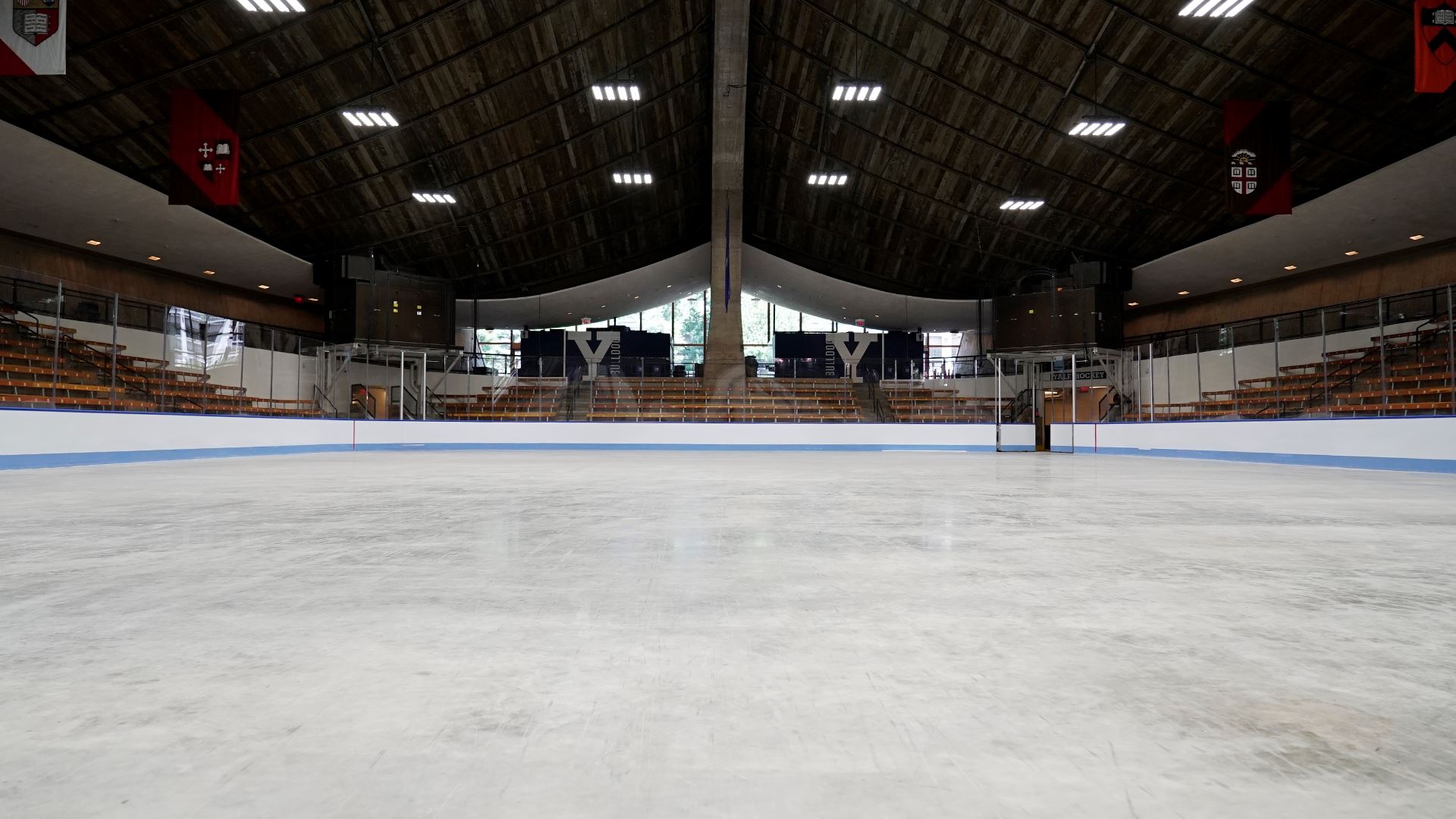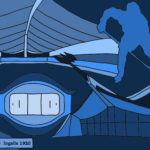Yale report finds increased risk of COVID-19 transmission in indoor ice rinks
As Connecticut prepares to loosen COVID-19 restrictions on sports competition beginning March 19, a Yale School of Public Health study warns of the high risk of SARS-CoV-2 transmission in indoor ice rinks.

Courtesy of Yale Athletics
A report released last month by the Yale School of Public Health found elevated risks of SARS-CoV-2 transmission at indoor ice rinks.
Krystal Pollitt, assistant professor of epidemiology, authored the report, which used a mathematical model to examine the heightened risk of COVID-19 transmission in conditions with varying heating, ventilation and air conditioning systems, as well as in mask-wearing and non-mask-wearing scenarios. The report concluded that it is reasonable to suspect that the use of indoor ice arenas will increase the exposure risks of skaters to SARS-CoV-2 aerosols.
“It is important to [be] aware of the increased risk of being out on the ice as the state reopens,” Pollitt wrote in an email to the News. “Indoor spaces can present higher risk for transmission of SARS-CoV-2, including ice rinks.”
The report examined the impact of three factors — heating, ventilation and air conditioning airflow, the number of infected skaters and mask use — on the transmission risk of SARS-CoV-2 at indoor ice rinks.
The report’s mathematical model used two different types of heating, ventilation and air conditioning operation levels — one corresponding to 1.1 air changes per hour and the other with a lower ventilation level of 0.2 air changes per hour in the ice rink. Assuming a community positivity rate of 7 percent in both the low and high air exchange scenarios, the probability of infection for any given player varied based on the number of infected players in the rink. The model found that increasing the number of infected skaters from one to five multiplied transmission risk by a factor of 2.4 for the lower ventilation level and 3.5 for the higher ventilation level.
According to the model, if players wore masks, the risk of transmission would decrease by approximately 30 percent.
“About 30 percent effectiveness against transmission kind of plays out with what we know about masks,” said Albert Ko, department chair of epidemiology. “They’re not 100 percent.”
However, Ko stressed that masks are still important to prevent transmission, especially when hockey players and skaters are breathing heavily while exerting themselves physically on the ice.
Pollitt also mentioned that poor ventilation in indoor spaces contributes to heightened levels of aerosolized SARS-CoV-2 particles that hover at face level and that the particular humidity conditions and temperatures in indoor ice rinks may aid in the survival of viral particles suspended in the air.
Pollitt also described the phenomena of “thermal inversion,” which can increase transmission risk.
“The cool air near the ice pad and the warmer air above create a thermal inversion,” Pollitt wrote to the News. “This inversion prevents air from above the ice from mixing with air in the rest of the arena. Virus released by players on the ice are effectively trapped and levels build up over time, increasing transmission risks.”
Additionally, Pollitt said that the use of ice rinks could also contribute to COVID-19 severity. She cited many studies describing how Zambonis are known to release pollutants like nitrogen dioxide when resurfacing the ice, potentially causing adverse health effects. She postulated that exposure to such pollutants could exacerbate the severity of the disease if a skater already has COVID-19.
Yale men’s ice hockey head coach Keith Allain ’80, whose Bulldogs did not play in the winter season, shared his perception of the situation with the News.
“I know there have been hundreds of college hockey games played this season, hundreds more in pro hockey,” Allain said. “I am unaware of any cases of COVID being spread because Zambonis trapped virus particles.”
With the acceleration of vaccine rollout, Connecticut Gov. Ned Lamont plans to loosen COVID-19 restrictions on sports competition starting March 19.
However, Pollitt and Ko cautioned that even with expanded age criteria for the vaccine, it will be crucial to consider ventilation in indoor facilities, including the ice rink and locker rooms, to help mitigate the spread of the virus.
Yale Athletics Senior Assistant Director of Strategic Communications Steve Conn said the athletic department was not able to comment on the risk of indoor play at Ingalls Rink. Greg Zullo, Yale’s director of third-party rentals and events, also declined to comment.
When asked what the report means for the future of Yale sports like hockey and figure skating, Ko said the answer is simple. Given the dangers of indoor ice rinks during a pandemic, players should get vaccinated to enable safe competition, Ko said. Due to the current status of the vaccine rollout in Connecticut, this is not feasible just yet.
“We don’t know about the duration of immunity [of the vaccine], but it looks like it likely may reduce infections,” Ko said. “It may not be entirely transmission blocking but it’s going to be transmission reducing.”
As of March 17, the Centers for Disease Control and Prevention reports 113 million vaccines have been administered in the United States.
Sydney Gray | sydney.gray@yale.edu
Amelia Lower | amelia.lower@yale.edu








